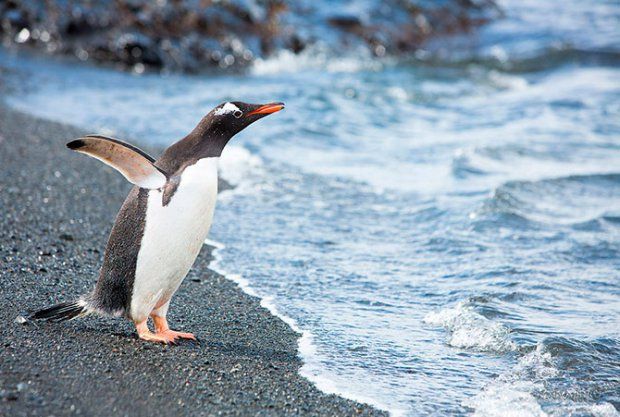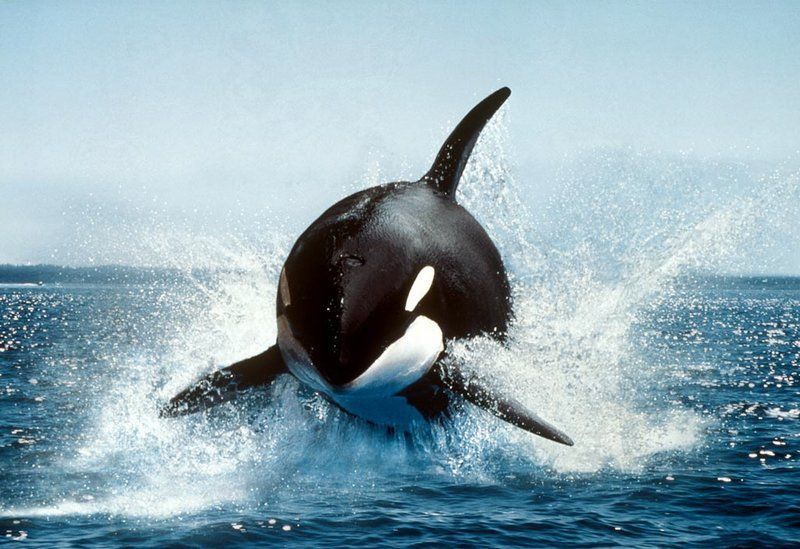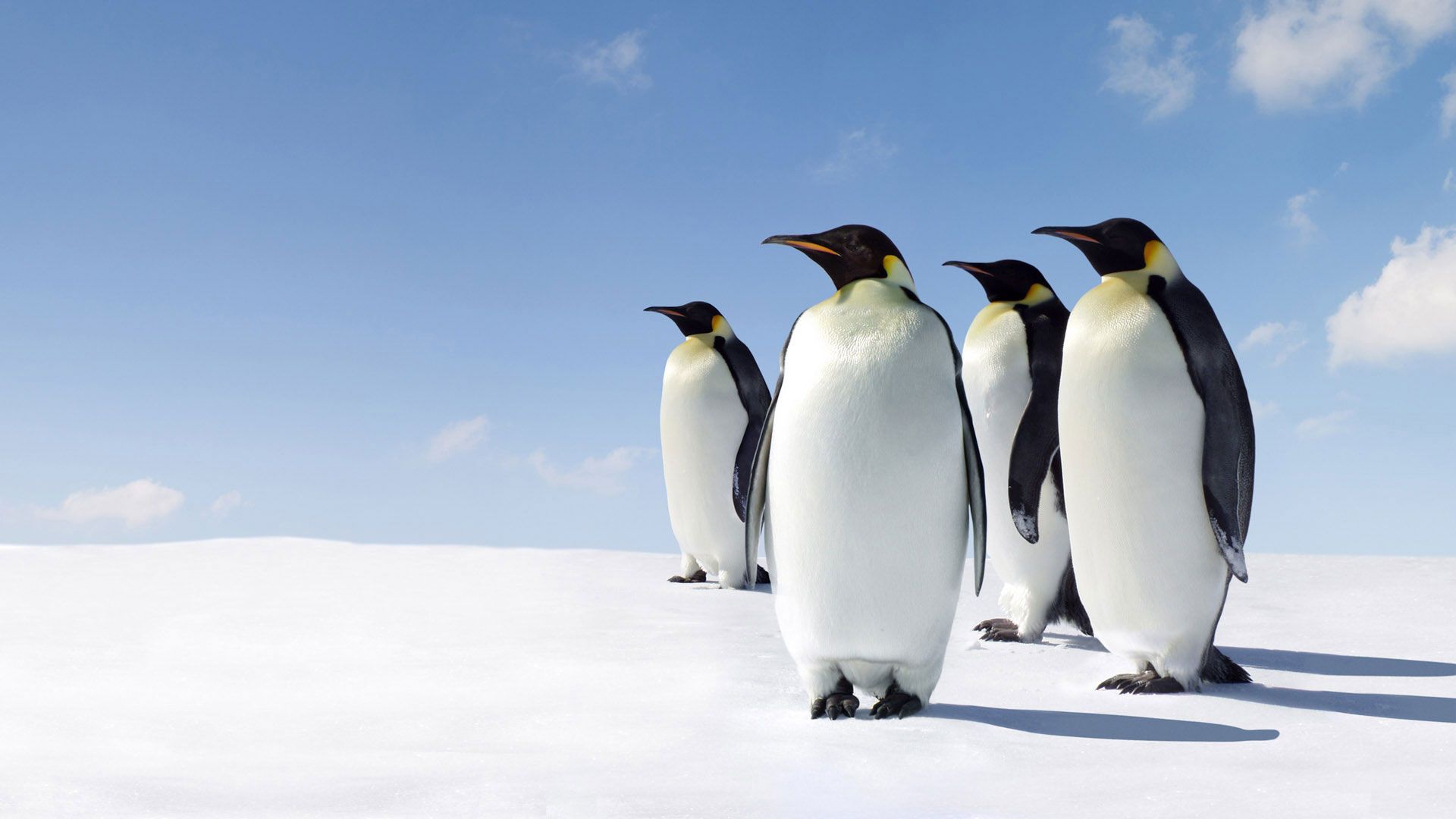Features of sea animals
Chinese mitten crab (Eriocheir sinensis), Canadian crab (Rhithropanopeus harrisii)
The Chinese mitten crab was accidentally introduced in 1911 to Western Europe. His homeland is the Far East. After 20 years, he populated all of Europe - from the Czech Republic and Slovakia to France, including the Baltic Sea. Now it has spread to the rivers of many Western European countries, where it causes significant harm, as it undermines banks, destroys dams, breaks fishing nets and spoils fish. On the coast of our sea, the waves throw up small ones, but at greater depths they are quite large. They have no commercial significance yet (see appendix).
Small Canadian crabs also live in the sea. Their habitat is slightly brackish waters. And their homeland is the west coast of North America. He got here on the bottoms of ships. In our sea he found food - zebra mussel and other mollusks, as well as favorable conditions for development.
North Sea shrimp (Crandon crandon), Baltic shrimp Palaemon squilla
Several species of shrimp live in the Baltic Sea: They have a well-developed long abdomen and limbs adapted for swimming. Shrimp are predators. They bury themselves in the sand, from which only their eyes protrude on stalks, or live on the bottom, densely overgrown with algae. Shrimp serve as food for other animals that live in the water, such as fish. There are two types of shrimp in our area; they are quite numerous. North Sea shrimp and Baltic shrimp - with a more slender body and a long jagged rostrum of the carapace above the eyes.
Order Multipeds or Amphipods (Amrhiroda)
Most amphipods live in the sea. Among them there are both benthic (burrowing in the ground, living in protective tubes) and planktonic. The body of amphipods is laterally compressed, and it swims on its side, which is why it got its name. Among the representatives of Amrhiroda, the sea fleas Cammarus deserve attention. Masses inhabiting the tidal shelf zone of our sea. They are very tolerant of salinity levels and temperature fluctuations. The practical importance of amphipods is quite great; they are the favorite food of various fish and their fry.
Order Isopods (Isopoda)
Sea cockroach. (Mesidothea entomon)
Climatic conditions are constantly changing. Following changes in conditions, animals also change, but in some places relict species have been preserved that speak of past eras of fauna, for example, the sea cockroach. It is found at great depths, and can only be found on the coast after a strong storm. The body is flattened in the dorsal-ventral direction, the length is up to 8 cm. Its homeland is the Arctic waters of the Arctic Ocean. The Baltic Sea was once part of this ocean, and these animals have remained here forever. They found here an abundance of food and favorable living conditions. It can rise up rivers for more than a thousand km. The sea cockroach is food for many fish. Sometimes it damages nets and fish caught in them.
Subclass Maxillopoda
Order Barnacles (Ciripedia) Sea acorn (Balanus hammeri)
This is a sea crustacean that leads an attached lifestyle. Hermaphrodite sea acorn. Initially, the larva swims in the water column, and then descends and attaches to water objects, stones, shell valves or algae. Their body is hidden inside a special shell, consisting of several calcareous plates. Some plates are fixedly fastened together, forming walls, while others can close and open. Tentacles protrude through the gap of these plates, which capture food of single-celled animals and absorb oxygen from the water (Appendix No. 4).
If you put a stone with these crustaceans in a jar of water, then after a while you can see how the sea acorns pull out their tentacles.
Type tentacular (Tentaculataa)
Class Bryozoa
Bryozoans are colonial animals that lead a sessile, attached lifestyle. The sizes are small: colonies measure a few centimeters, and individual individuals are about 1 mm long. They can often be seen on the valves of mollusk shells. Their food is unicellular algae and protozoa. Bryozoans are hermaphrodites and can reproduce both sexually and asexually. The formation of colonies is the result of incomplete asexual reproduction through budding. Bryozoans live primarily in the sea, where they are found at various depths, from coastal rocks to greater depths. Bryozoans are ancient marine animals, already known from Silurian deposits.
Walking along the seashore, take a close look at the discarded algae, shellfish, stones and you will see a mesh pattern similar to a honeycomb - these are colonies of bryozoans. If the colony is alive, then the cells are filled with a jelly-like mass. If the bryozoan is dead, the cells are open and empty (Appendix No. 6).
Type Mollusca
Class Bivalves. (Bivalvia)
Cerastoderma edule
In shallow places on a sandy or algae-covered bottom, the cordate is common - a mollusk with a bivalve shell. The name of the mollusk speaks of its shape; it really resembles a heart. Edule means "edible" in Latin. In the southern Baltic there are large hearts, they are even sold. In our area they are very small, their size is 2.5 cm. Every year, researchers find more and more new species. Therefore, it is difficult to say how many species of heartworms live in the sea.
Mussell (Mytilus edulis)
Mussels are mollusks similar to ordinary black or dark gray river pearl barley. But mussels do not live in fresh water, but in the sea at a depth of 1 to 60 m. Bryozoans happily settle on their shells, covering them with a mesh pattern. Mussels living in the Baltic Sea come in different sizes. It depends on the area where you live. On the west coast their length is 6-10 cm, on the coast of Lithuania - less than 3 cm, and in the Gulf of Bothnia 1.5-2.5 cm long. The mollusk of our coast is also not large and is about 3 cm. Mussels living in warm seas are large. Mussels are the most common mollusks in the Baltic. They obtain food by filtering water. A large mussel can filter 5 liters of water in an hour. Over the course of a year, all the mussels, and there are about 8 million tons of them, manage to filter all the sea water.
Mussels are edible. Caught animals are boiled, removed from the shell, and everything inedible is discarded - liver, stomach, gills. After this, canned food is made from mussels. Most of all, mussels are loved in Holland - about 12 kg of them are caught there. per year for each resident. Restaurants can offer you more than 100 mussel dishes: mussel pies, fried mussels in sauce, mussel meatballs, mussel pilaf and many other tasty things
Baltic Macoma (Macoma Baltica)
The Baltic makoma lives in the muddy bottom. The color of the shell can be white, yellowish or pink. The shells are very fragile and break easily. They live at a depth of 40 m. Per 1 sq.m. can be up to 1000 poppies. Makoma got its name because it lives in all parts of the Baltic and even in desalinated bays. It moves very slowly, crawling short distances on the seabed.
Sand shell (Mva arenaria)
This is the largest bivalve Baltic mollusk, its shell reaches a length of about 12 cm. The shell is off-white in color. These mollusks live at a depth of 10 meters. They came from the northern regions of the Atlantic Ocean and they have adapted to life in the saltier ocean waters. The sand shell lives at the bottom, buried deep in the sand. It is connected to the bottom surface by long, fleshy siphons fused together. The elongated siphon is 5 times longer than the shell. Water circulates in them, washing the gills. Water brings food to the mollusk. In many countries, people spend a long time searching for sand shells. They are edible and considered a delicacy. On our beach it is easier to find a dead clam because a living one is extremely careful.
Type Mollusca (Mjllusca)
Class gastropods. (Gastropoda)
Hydrodia.
Hydrobia is a gastropod with a fragile shell that is twisted in the shape of a spiral. They live among algae or on pebble bottoms. Their sizes are very small, and to find them you need to be very careful. Hydrobia cleans food particles from algae or stones with its grater tongue, and can also filter silt. It moves along the bottom very slowly on one of its legs with a crawling sole. Movement is facilitated by mucus secreted by a special gland and cilia. The hydrobia snail, like crabs, is an immigrant that has spread to our sea (see Appendix No. 5).
Type Coelenterata
Class scyphozoan jellyfish (Scyphozoa) Order Semaeostomeae
Eared jellyfish (Aurelia aurita)
They measure about 40 cm in diameter. The umbrella is transparent, yellowish, crimson or lilac. The body of most jellyfish is transparent; water makes up 97.5% of the total body weight. Along the edges of the umbrella are numerous small tentacles and 8 statocysts. The mouth is bordered with cross-shaped diverging lobes. Violet or brownish gonads are visible. They are predators, feeding on planktonic invertebrates. They swim using umbrella contractions, the number of which can reach 100 - 140 per minute. They live in all temperate and tropical seas, and also enter Arctic waters. In Russia they are found in the Black, Baltic, Barents and White Seas. They appear in large numbers near the coast in July–August, and can sometimes be seen in September–October. Jellyfish can be kept in an aquarium under room conditions, which allows you to observe all stages of development, since they are hermaphrodites (Appendix No. 6).
Algae (Algae)
A collective group of lower, aquatic plants. They live in all bodies of water, both fresh and salt water. They lead a mostly attached lifestyle. They have no real roots, stems, or leaves. Instead of roots there are rhizoids, with the help of which they attach to bottom objects. Instead of stems and leaves there is a thallus.
Algae are distinguished by color: green, brown, red. In the Baltic Sea there are algae of all three divisions (Appendix No. 7)
Division of green algae (Chlorophyta)
These algae are found in the shallowest waters, where the sun's rays penetrate to the entire depth. These are unicellular and multicellular algae. Ribbon-like green algae called Ulva. They can be found in the seas of all climate zones from the Arctic to the tropics. However, the vast majority of representatives live in the seas of temperate latitudes.
Cladophora GlomerataFilamentous bushy - cladophora, growing on stones, pillars and piles, almost at the very surface of the water. There are about 200 species in fresh and marine waters. It is widespread in the Baltic Sea. Different species predominate at different times of the year. At different depths and in different parts of the Baltic. The thallus is bushy, with branches from one row of multinucleate cells with reticulate chloroplast. Reproduction is asexual (zoospores) and sexual (isogamy).
Division Charophyta
Family Characeae, Genus Chara
There are about 300 species. The Khara genus is the most extensive - about 40 species. They inhabit mainly fresh water bodies, but there are also species living in sea water. These are very ancient plants, which is clearly demonstrated by their findings in fossil form. Characeae are plants that do not have roots. Outwardly, they look like Christmas trees. Thallus up to one meter high. These algae are saturated with calcium carbonate and are therefore very fragile.
Department Brown algae. (Phaeophyta)
Fucaceae family Fucus vesiculosus
Brown algae grow to a depth of 200m. Fucus is one of the large brown algae and grows on rocky bottoms along the entire coast of the Baltic Sea. The most remarkable phenomenon for the Baltic is the Fucus belt. By examining the fucus and measuring several shoots, we were able to determine the average annual growth. It ranged from 1 to 5 years in autumn and winter. In summer, the average annual increase was 5 – 7.5 years. Bubble algae have male and female individuals, and in order for reproduction to occur, the reproductive cells travel through seawater. Interestingly, representatives of blister algae release male and female reproductive cells mainly during the full and new moon. Fucus plays an important ecological role in the life of the sea ecosystem, since they are the only perennial species of algae.
Division Red algae (Rhodophyta)
Furcellaria fastigiata
Red algae are algae whose cells, in addition to chlorophyll, contain red substances, coloring them red and capable of photosynthesizing in low light conditions. These include furcellaria. The substance agar-agar is extracted from it, which is used in microbiology for growing microorganisms and in the confectionery industry.
The importance of algae is great for wildlife and humans:
- source of oxygen and food in water.
- reliable shelters for small animals, eggs and fish fry.
- obtaining valuable substances: agar-agar, vitamins, iodine.
- sea grass, which can be collected after a storm, is used to make wallpaper, and was once used to stuff pillows and mattresses; this grass serves as food for farm animals.





No comments here yet.